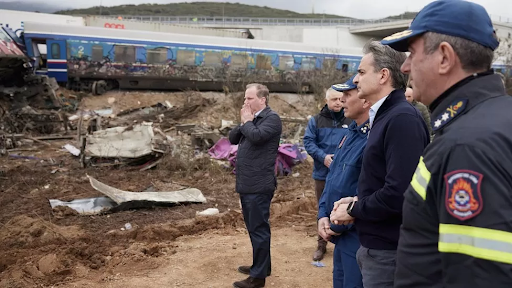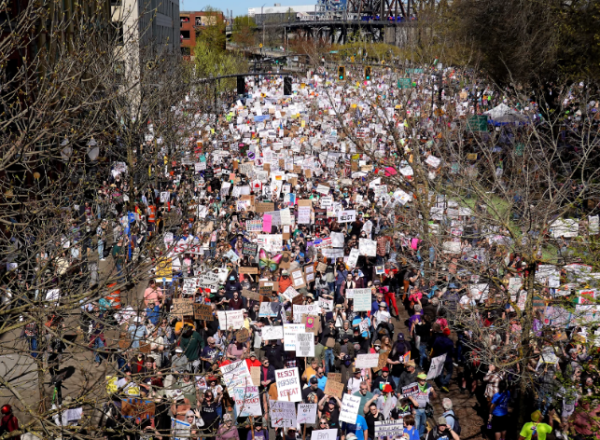Deadly train collision In Greece

Image via BBC
Two trains collided in a fiery crash near Larissa, Greece, killing at least 36 people. An additional 85 were injured, 65 of which were hospitalized.
Both trains were severely mangled during the collision, which occurred in the evening of February 28, with rescue attempts continuing into the next morning. This incident occurred approximately a month after a train derailed in Ohio, releasing toxic chemicals.
The passenger train, which was carrying more than 350 people, was traveling at high speeds from Athens to Thessaloniki. The speed the two trains were traveling at is currently unknown, but Greece’s public media center (ERT) reported that it was above 87 miles per hour. The Associated Press reported that many of the passengers were students returning from Carnival, which is a festival that precedes Lent. This was the first time that it had been fully celebrated since 2020.
The freight train, according to ERT, was carrying construction materials, such as heavy plates of steel. There were two passengers on this train. The two trains collided head on, just before midnight local time.
The first two carriages of the passenger train went airborne before bending backwards and catching on fire. The fire spokesperson, Vassilis Varthakoyiannis, stated that “temperatures reached 2,372 Fahrenheit, which makes it even more difficult to identify the people who were in it.”
Rescuers have begun using cranes and other heavy machinery to detangle larger pieces of metal, uncovering more bodies. Officials reported that the Greece Government has contacted the army for further support in identifying bodies and clearing the debris.
The Greek Prime Minister, Kyriakos Mitsotakis, visited the site of the crash, placing flowers beside the ruined trains. He stated, “I can guarantee one thing: We will find out the causes of this tragedy and we will do all that’s in our power so that something like this never happens again.”
The transport minister, Kostas Karamanlis, announced his resignation after seeing the wreckage as a “sign of respect for the memory of the people who died so unjustly.”
The station master was also arrested and charged with manslaughter due to his negligence. The man denied these charges, stating that the incident was a result of a technical failure. Following further investigation, details emerged revealing that the stationmaster was relatively inexperienced and was left unsupervised at his post on a busy weekend.
The head of the Train Drivers Union, Kostas Genidounias, revealed that the union had already warned authorities of safety issues on the train line near the site of the crash before the incident occurred, which was evidently disregarded.
Protests erupted in the days following the crash, with several resulting in violence, demanding more accountability from the government. Five demonstrators were arrested after setting dumpsters on fire and throwing Molotov cocktails. Police responded by firing tear gas and stun grenades to clear the area. Seven officers were injured.
Prime minister Mitsotakis, who was expected to hold an early election in April, before his term ends in July changed his plans following the crash. Mitsotakis, who presented himself as a leader who would increase Greece’s modernisation, is now in a precarious situation as he faces backlash in the final months approaching the election.
Several European leaders sent their condolences, such as the Turkish Foreign Mevlut and Ukraine’s president, Volodymyr Zelenskyy. As support continues to pour in, Greece mourns the individuals lost in this tragedy, and continues to investigate the causes to ensure this never happens again.

Co-Editor in Chief Heidi Gilman is a Senior at South Lakes, and is excited to continue her journey working for the Sentinel. She loves to swim and is a...













